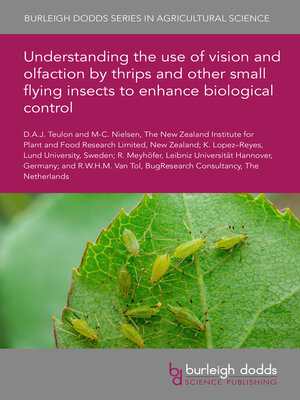Understanding the use of vision and olfaction by thrips and other small flying insects to enhance biological control
ebook ∣ Burleigh Dodds Series in Agricultural Science
By Dr David Teulon

Sign up to save your library
With an OverDrive account, you can save your favorite libraries for at-a-glance information about availability. Find out more about OverDrive accounts.
Find this title in Libby, the library reading app by OverDrive.



Search for a digital library with this title
Title found at these libraries:
| Library Name | Distance |
|---|---|
| Loading... |
Biological control is important for the management of small insect pests such as thrips, aphids, psyllids and whiteflies, and options to enhance the effectiveness of the natural enemies of these pests are urgently needed. Stimuli associated with host plant finding, mostly vision and olfaction, provide the basis for pest (and increasingly natural enemies) monitoring but there are also a range of additional opportunities based on these stimuli to manipulate pest and natural enemy dynamics for improved pest management. This chapter examines the visual and olfactory systems associated with host finding, that is the period before physical contact with the plant (habitat and host location and not host acceptance), and how responses to these stimuli might be exploited to enhance biological control. Our focus is on thrips and other small, winged insects, and particularly those which are plant pests and the targets of biological control programmes.






